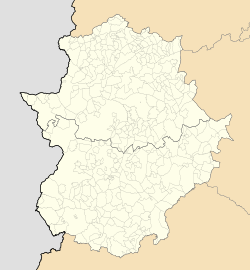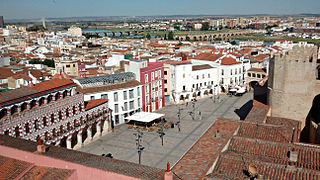
Badajoz is the capital of the Province of Badajoz in the autonomous community of Extremadura, Spain. It is situated close to the Portuguese border, on the left bank of the river Guadiana. The population in 2011 was 151,565.

The province of Badajoz is a province of western Spain located in the autonomous community of Extremadura. It was formed in 1833. It is bordered by the provinces of Cáceres in the north, Toledo, Ciudad Real in the east, Córdoba in the south-east, Seville, and Huelva in the south and Portugal in the west.

Montijo is a town and municipality in the province of Badajoz, in Extremadura, Spain. It has a population of 16,236 inhabitants. It is located between Badajoz and Mérida, near Guadiana river banks. The extension of the municipality covers three different centers of population: Lácara, Barbaño and Montijo, the latter being the capital.

Pueblonuevo del Guadiana, also shortened as Pueblonuevo, is a Spanish town and municipality in the province of Badajoz, Extremadura. It has a population of 2,046 and an area of 30,95 km².
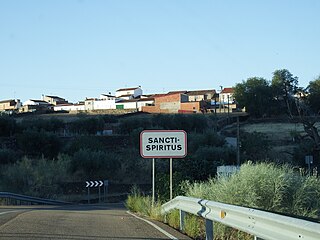
Sancti-Spíritus is a municipality in the province of Badajoz, Extremadura, Spain. According to the 2014 census, the municipality has a population of 222 inhabitants.

Higuera de la Serena is a municipality in the province of Badajoz, Extremadura, Spain. It has a population of 943 and an area of 71.1 km2.
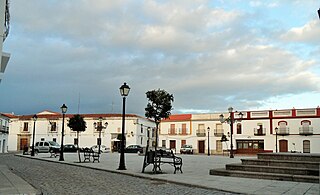
Bodonal de la Sierra is a municipality located in the province of Badajoz, Extremadura, Spain.

Táliga or Talega is a Spanish town and municipality located near the border with Portugal, in the province of Badajoz, in the Spanish autonomous community of Extremadura. Portugal considers Táliga, as well as neighbouring Olivenza, a de jure part of the Portuguese concelho of Olivenza, occupied by Spain since 1801..

Aceuchal is a municipality located in the province of Badajoz, Extremadura, Spain. As of 2017 the municipality has a population of 5436 inhabitants.

Alange is a municipality located in the province of Badajoz, Extremadura, Spain. As of 2017 the municipality has a population of 1,891 inhabitants.

Arroyo de San Serván is a municipality located in the province of Badajoz, Extremadura, Spain. According to the 2012 census (INE), the municipality has a population of 4267 inhabitants. The town's first census was held in 1842, as part of Badajoz.
Casas de Don Pedro, meaning 'Lord Peter's houses', is a municipality located in the province of Badajoz, Extremadura, Spain. According to the 2014 census, the municipality has a population of 1559 inhabitants.
Garbayuela is a municipality located in the province of Badajoz, Extremadura, Spain. According to the 2006 census (INE), the municipality had a population of 531.

La Nava de Santiago is a municipality located in the province of Badajoz, Extremadura, Spain. According to the 2005 census (INE), the municipality has a population of 1135 inhabitants.

Oliva de la Frontera is a municipality located in the province of Badajoz, Extremadura, Spain. According to the 2006 census (INE), the municipality has a population of 5881 inhabitants.
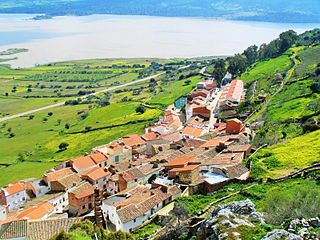
Capilla is a Spanish municipality in the province of Badajoz, Extremadura. It has a population of 189 (2007) and an area of 147 km2.

Corte de Peleas is a Spanish municipality in the province of Badajoz, Extremadura. It has a population of 1,257 (2007) and an area of 42.3 km2.
Llera is a Spanish municipality in the province of Badajoz, Extremadura, western Spain. According to the 2014 census, the municipality has a population of 905 inhabitants.
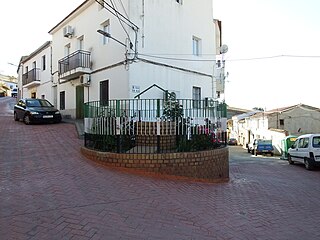
Risco is a Spanish municipality in the province of Badajoz, Extremadura. According to the 2014 census, the municipality has a population of 151 inhabitants.
Guadiana, is a Spanish town and municipality of the Province of Badajoz, in the autonomous community of Extremadura. The municipality covers an area of 30.05 square kilometres (11.60 sq mi) and as of 2015 had a population of 2,527 people.

